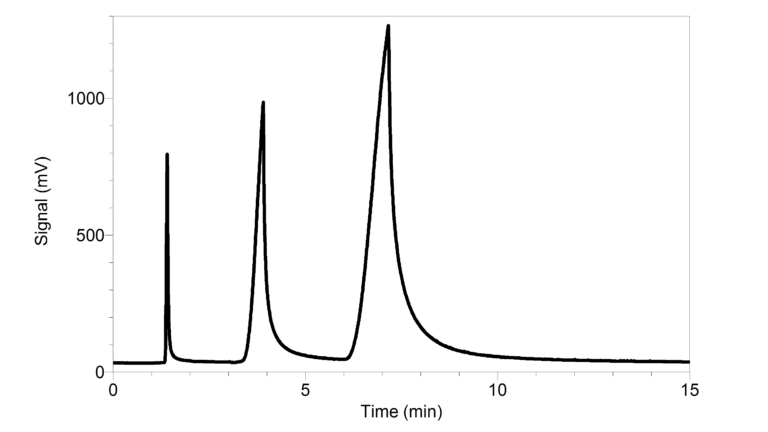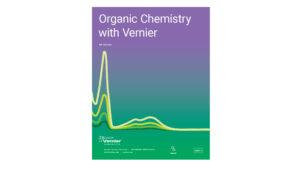Investigating Gas Chromatography
Experiment #8 from Organic Chemistry with Vernier
- Education Level
- College

Introduction
Gas Chromatography is a technique widely used to separate complex mixtures of substances. Compounds present in a volatile liquid or gaseous solute are isolated after traveling through a coated column based on the substance’s size and intermolecular interactions. If a compound tends to bind to the column through intermolecular interactions, it takes a longer time to emerge compared with a compound that does not tend to stick onto the column. The level of binding experienced between the substances and the column is determined based on the number and strength of intermolecular interactions between the two species. Substances that pass quickly through the column exhibit fewer intermolecular interactions with the column.
The Vernier Mini GC uses a metal column with a nonpolar coating, called the stationary phase. A sample, consisting of one or more compounds, is injected into the column and is carried through the stationary phase by atmospheric air, which acts as the mobile phase. The nonpolar coating of the stationary phase most strongly retains solutes of the same polarity. Organic compounds flowing out of the chromatography column are then detected by a chemical sensor that produces electrical responses proportional to the concentration of the compounds. The presence of such a chemical at the detector is seen as a peak on a chromatogram. The unique time it takes for a compound to exit the column after it is injected is called the retention time. With a gas chromatograph, a compound can be identified from a mixture by its retention time.
Several factors can affect a compound’s retention time. More volatile compounds (i.e., compounds with a lower boiling point) will move through the column faster because they are flowing in the mobile phase and not strongly bonded with the stationary phase. The surface functional groups present on the compound are also a factor. For example, alcohols may weakly bond with a polar stationary phase more than esters because alcohols are capable of forming hydrogen bonds. The molecular weight of a compound may also play a role to a slight extent, although it is not a direct relationship that the heavier the molecule, the slower it will travel through a GC column.
As you will discover in this experiment, the instrument settings also affect a compound’s retention time. When separating compounds with a wide range of boiling points and polarities, it helps to raise the column temperature during the separation. Temperature programming reduces elution times of highly retained compounds. Adjusting the pressure will have a similar affect; higher pressures cause greater strain on the intermolecular interactions between the compound and stationary phase, ultimately reducing the retention time.
In this experiment, you will gain experience with the Vernier Mini GC by injecting a known sample into the device. The sample contains five compounds that will separate under the proper conditions. You will test this one mixture of compounds repeatedly and vary the profile of the Mini GC operation to obtain the best possible separation of this mixture.
Objectives
In this experiment, you will
- Measure and analyze the chromatogram of a mixture of five compounds as they pass through a Vernier Mini GC.
- Vary the temperature-pressure profile of the Mini GC and observe how the chromatogram is affected by such changes.
- Determine the best temperature-pressure profile to obtain clear separation of all five compounds.
Sensors and Equipment
This experiment features the following sensors and equipment. Additional equipment may be required.
Ready to Experiment?
Ask an Expert
Get answers to your questions about how to teach this experiment with our support team.
- Call toll-free: 888-837-6437
- Chat with Us
- Email support@vernier.com
Purchase the Lab Book
This experiment is #8 of Organic Chemistry with Vernier. The experiment in the book includes student instructions as well as instructor information for set up, helpful hints, and sample graphs and data.


